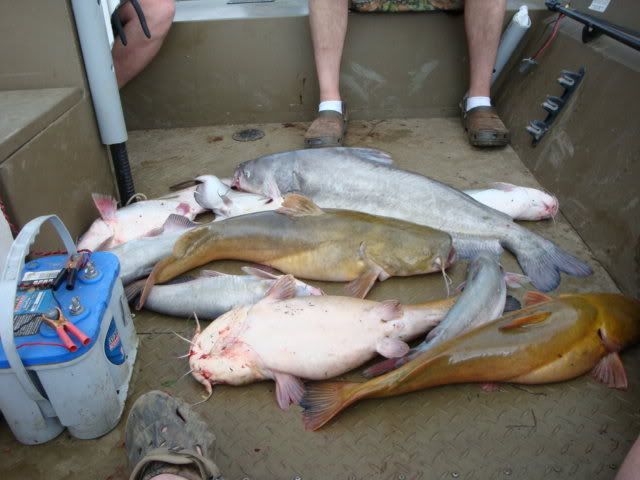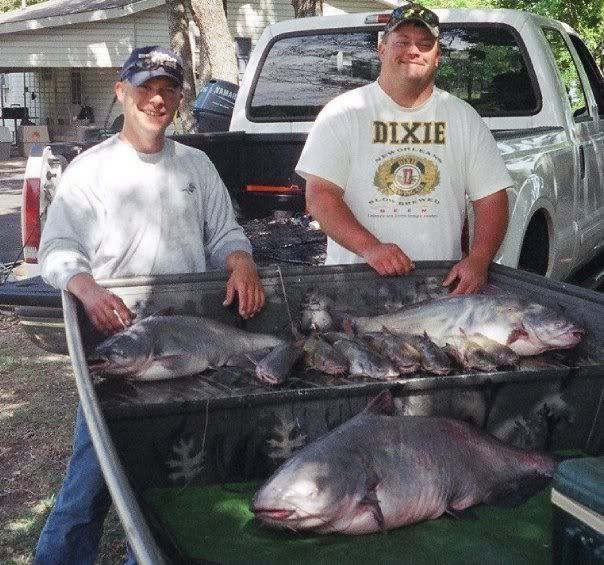Like everyone else said.. Deep Water, Structure, and Live Bait (carp, mud cats, perch, goldfish will work too)
Announcement
Collapse
No announcement yet.
Flathead Catfish
Collapse
X
-
When I used to help a friend with his Trot lines at Richland Chambers, we met a guy who regularly caught some nice sized bass and would cut them up for bait. He almost always caught some really nice flatheads with bass as bait. It was kind of shocking to see him cut up bass as big as 10 pounds for bait. Other folks thought that was odd and wasteful too.
Comment
-
I thought that was illegal.Originally posted by HillCountyDude View PostWhen I used to help a friend with his Trot lines at Richland Chambers, we met a guy who regularly caught some nice sized bass and would cut them up for bait. He almost always caught some really nice flatheads with bass as bait. It was kind of shocking to see him cut up bass as big as 10 pounds for bait. Other folks thought that was odd and wasteful too.
Comment
-
You go to catching fish this size and you will wish you had a bigger hook. The top fish dang near drowned me. After loosing a couple big ones because the hooks breaking I started using 13/0. I caught these in North East Texas.Originally posted by thec4ranch View Posti use 7/0 circle hooks


Comment
-
Originally posted by HillCountyDude View PostWhen I used to help a friend with his Trot lines at Richland Chambers, we met a guy who regularly caught some nice sized bass and would cut them up for bait. He almost always caught some really nice flatheads with bass as bait. It was kind of shocking to see him cut up bass as big as 10 pounds for bait. Other folks thought that was odd and wasteful too.It is!Originally posted by fox1 View PostI thought that was illegal.
Comment
-
On trot lines in man-made lakes, fish along the "second" bank of the main river or creek channel that was dammed. Fish near, but off bottom with live perch, preferably little sun perch, goggle-eye, or bream. Don't put hooks too close together and make stagings 18 to 24 inches long. I don't use circle hooks. If a straight shank hook is tied on the line properly, it will have a relatively high possibility of catching an op after the bait is gone. Make your line tight. When running the line, NEVER put your hand under the main line. Keep it on top so if the fish suddenly makes a run, you can let go. Raise the line VERY slowly and carefully without any sudden movement to it. Often those ops will just come up with the line and can be dipped with a net if done quickly from the head end. Have a separate straight line rolled up on something that will allow it to unwind quickly with a very tight radiused hook on it (not a fishhook, but a hook with a radius tight enough that your main line will barely slide through it but will catch on the knots or swivels attached to the main line where the stagings are. When running the line keep the hook/line handy so if you suspect you have a big fish on you can attach the tight hook to the main line and slide it along as you continue to run the line. If a big fish makes a run, just let go of the trot line and let the fish go back down, then slowly bring him back up with the line attach to that tight radius hook. We call that tight hook/line a "yo-yo"... A big op will wear down pretty quickly. You can't out pull him so just keep some resistance on him and bring him back up when he stops his run. When he gets tired, he'll blow a big volume of bubbles, and then you can bring him up and net him. ALWAYS net the fish from the head. When that net touches him, he will be ready to fight all over again. When you touch him with the net, you want him to run into the bottom of the net, not away from the net...
Here's my biggest... 86# from Lake Livingston.
We only caught 4 on this trip, but they were good 'uns...
Last edited by SaltwaterSlick; 03-04-2014, 09:18 PM.
Comment






Comment